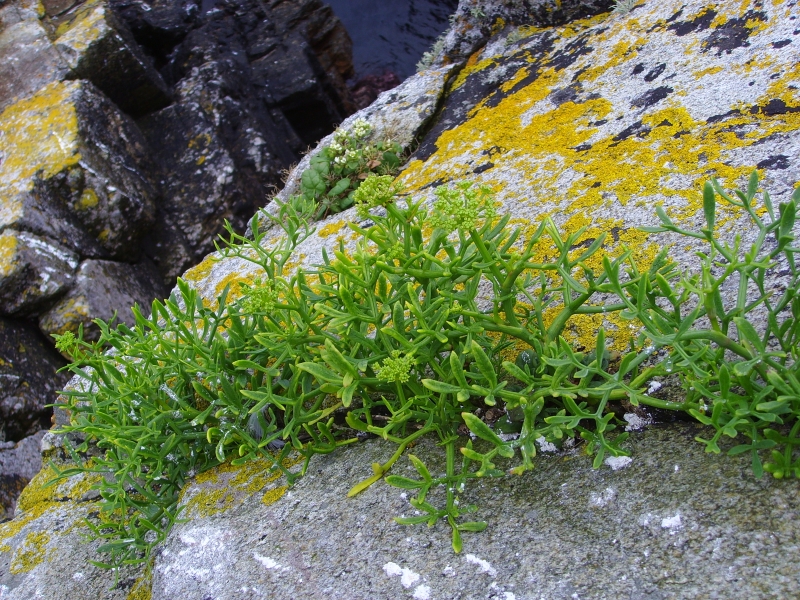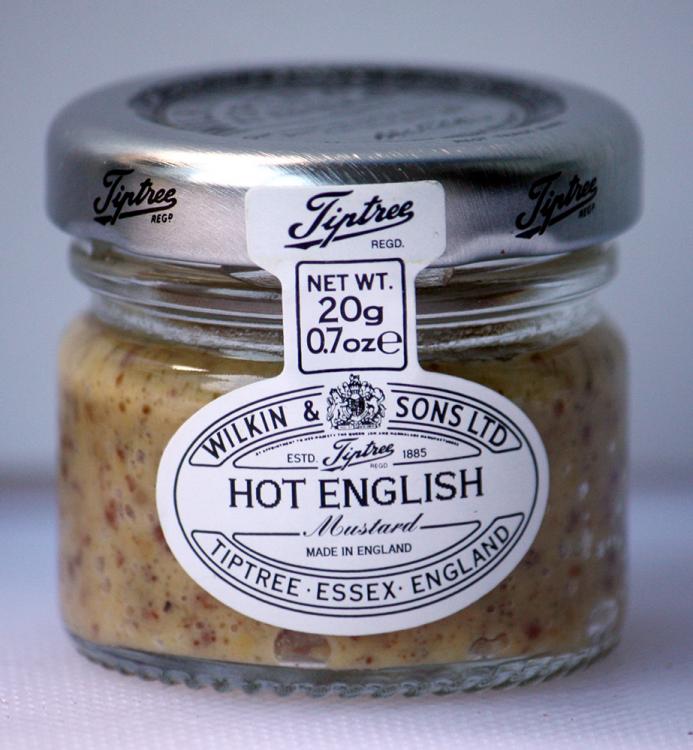1. The British Don't Use Herbs and Spices.
In fact, Britain developed herbed stew techniques long before the rest of Europe. Garlic was widely used (Britain still eats more garlic than the south of France, which has what is often considered a garlic laden cuisine - another stereotype.)
British food uses more spices and herbs than most! I live in China now and that cuisine is very low on the variety of spices and herbs it uses. No parsley, sage, rosemary or thyme! They do have herbs by the thousand, but they are used medicinally; not as part of dinner.
Wild samphire was widely eaten and later cultivated. Rock samphire was mentioned by Shakespeare in King Lear.
QuoteHalf-way down Hangs one that gathers samphire; dreadful trade!
— Act IV, Scene VI, Lines 14-15
This refers to the dangers involved in collecting rock samphire from sea cliffs. But people took the risk as the herb was so highly valued.

Rock Samphire
The Romans introduced, among others, coriander, chives, marjoram, stinging nettles, rosemary, onions, spearmint etc., all of which were happily adopted by the British and became part of the cuisine.
The British Empire came about partly because of the search for spices and in the 18th and 19th centuries, Britain was among the leading spice trading nations.
Saffron arrived much earlier via the Phoenicians! It is still extensively cultivated in east England near the town of Saffron Walden. I wonder where that town got its name!
Mustard had long been grown in Britain before the first prepared English mustard went on sale in 1720. Coleman’s mustard (first produced 1814) from England is sold internationally.
English mustard is one of the strongest flavoured mustards you will find. Far from bland or boring! It is coloured with turmeric.
Mint sauce with roast lamb has been widely mocked. In fact it has an interesting history. Queen Elizabeth 1 (1533-1603) wished to encourage the wool industry and decided the people were eating too many of the sheep. In order to stop this, she introduced a law (not banning its consumption; that would have been a step too far), insisting that lamb or mutton could only be cooked with “bitter herbs”. Mint was considered to be such a herb. So the cooks complied and discovered that mint with sheep is actually damned delicious. People 1; Queen 0.
The ubiquitous Brown Sauce, the nation’s second favourite after tomato ketchup is heavily spiced.

Few people can pronounce Worcestershire Sauce (introduced 1837 in England) correctly, but it is used world-wide to add flavour to dishes. I can buy Lee and Perrins Worcestershire sauce here in China, but there are also local versions.
Mention has been made of Indian and Pakistani influences on British food. Incidentally very few of the “Indian” restaurants in Britain are either Indian or Pakistani. They are mostly Bengali. And the curries they serve are nothing like what is served in the Indian sub-continent. The worst Indian food I ever ate was in India!
British food's adoption of Indian spices and making them their own belies any notion that British food is bland and spice-less.
To be continued


